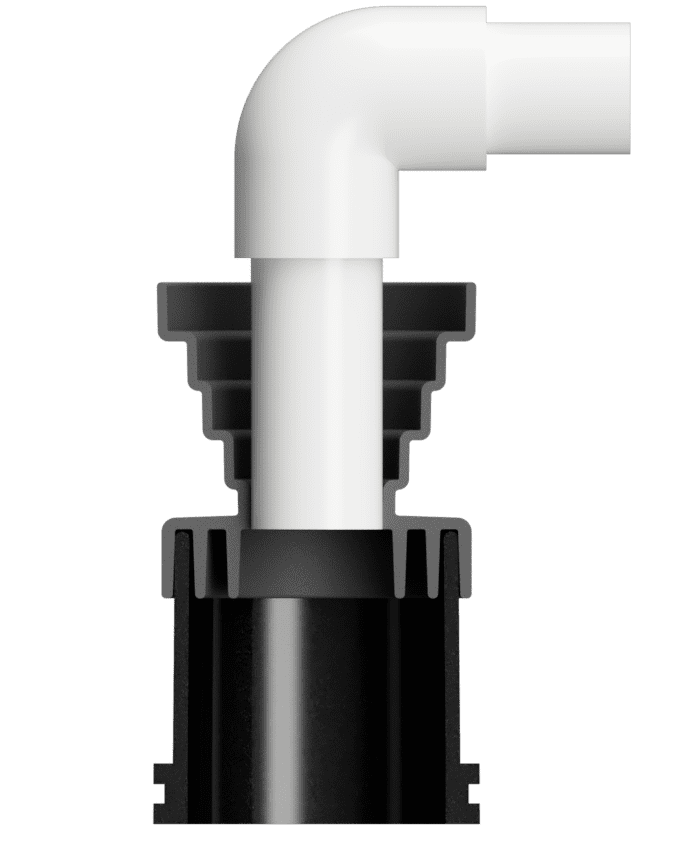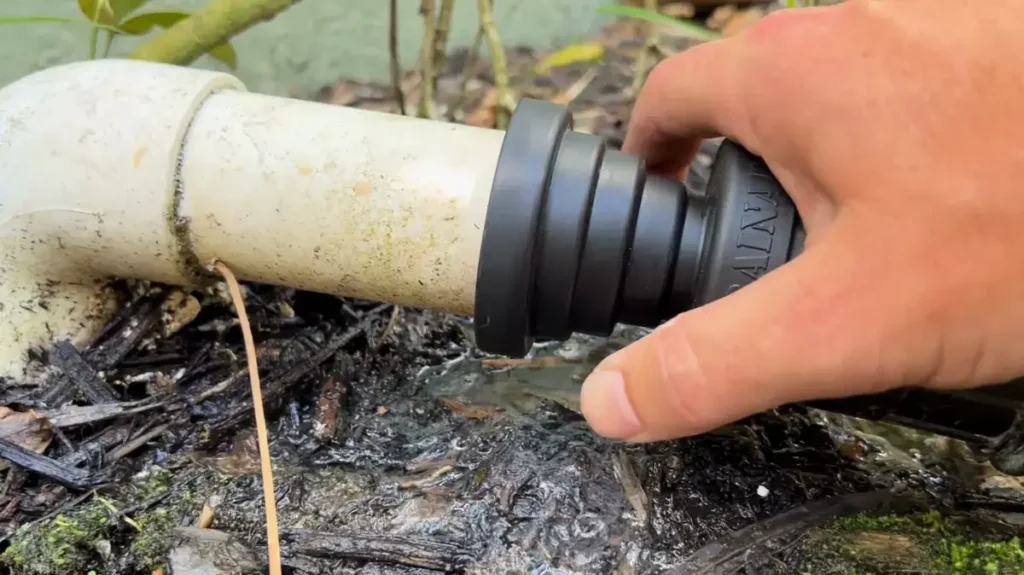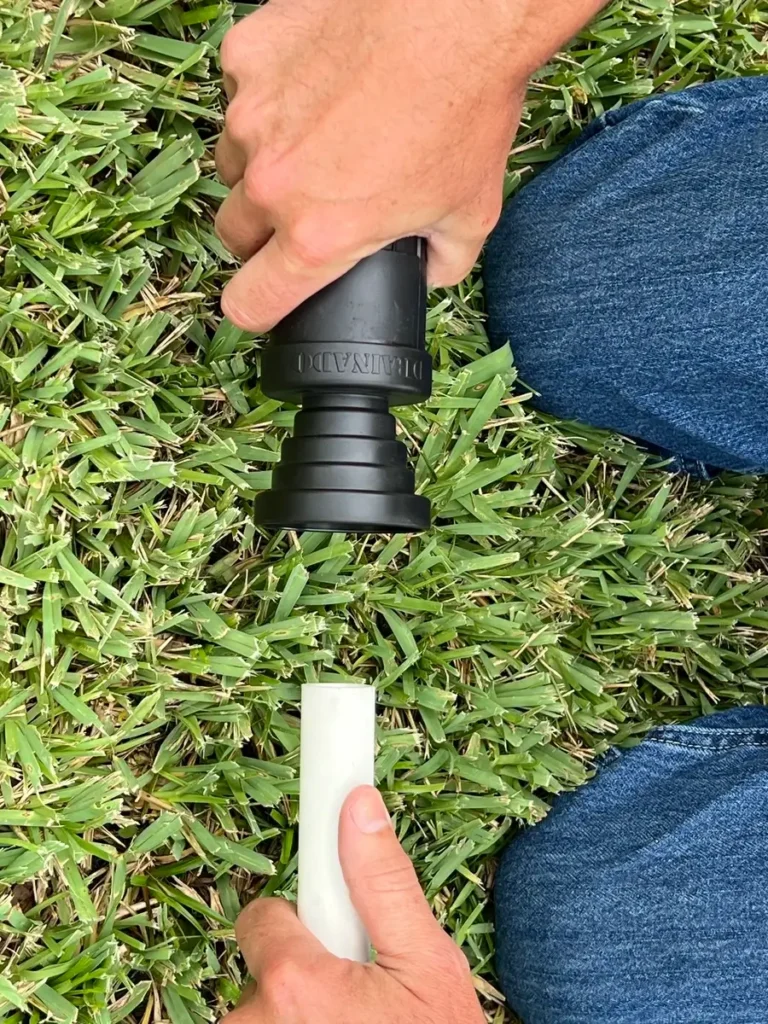In the labyrinth of components that make up your HVAC system, the drain pipes might seem inconspicuous, but their role is pivotal. Picture a hot summer day, your air conditioner working overtime, and suddenly, a mysterious leak appears, threatening to cause water damage. Often, the culprit lies in the overlooked drain pipes. Understanding the common problems associated with these pipes and how to solve them is essential for maintaining the efficiency and longevity of your HVAC drain pipe system. Whether you’re a homeowner or a professional, knowing what to watch for and how to respond can save you time, stress, and money.
Identifying signs of trouble with HVAC drain pipes is crucial for maintaining the efficiency and longevity of your system. Common indicators such as unusual gurgling or dripping noises often suggest blockages or partial clogs in the pipes. When these sounds become apparent, it’s a clear signal that inspection is necessary to prevent potential overflow or water backup. Water leaks around the HVAC unit or pooling water near the system are also red flags signaling drain pipe issues that require immediate attention. Additionally, if you notice a sudden drop in your system’s efficiency, like insufficient cooling or irregular temperature maintenance, it might be due to clogged or damaged drain pipes impeding proper drainage and airflow.
Regular inspections of your HVAC drain pipes can help catch these problems before they escalate into costly repairs or system failure. By proactively checking the pipes for signs of wear, clogs, or leaks, homeowners can mitigate the risk of more severe damage that could compromise the entire HVAC system. This routine maintenance not only ensures optimal performance but also extends the lifespan of the unit, providing a comfortable and reliable indoor environment. Understanding the importance of these inspections empowers homeowners to take charge of their HVAC maintenance, ensuring their system operates smoothly and efficiently year-round.

Clogs and blockages in HVAC drain pipes often stem from common culprits such as dirt, algae, and debris buildup. These obstructions can form over time, particularly in humid environments where moisture fosters the growth of algae and mold. Dust and particles from the air can also accumulate, compounding the issue and leading to blockages that impede proper drainage. When these clogs occur, they can cause water to back up into the system, resulting in potential water damage and decreased cooling efficiency. It’s crucial for homeowners to be aware of these usual suspects and take proactive measures to ensure their HVAC systems remain unobstructed.
To effectively address clogs and blockages, regular maintenance is key. Homeowners should schedule routine cleanings of their AC drain pipes to remove any accumulated dirt and debris. Using algaecide treatments can help manage and prevent algae growth, a common issue in warm weather. Additionally, installing filters can catch particles before they enter the system, reducing the likelihood of blockages. By promptly addressing clogs, homeowners can maintain optimal system efficiency and avoid costly repairs or water damage. This proactive approach not only prolongs the life of the HVAC system but also ensures a consistently comfortable indoor environment.
Structural problems in HVAC drain pipes, such as leaks and cracks, often arise from wear and tear, corrosion, or physical damage. Over time, the constant exposure to moisture and temperature fluctuations can cause pipes to weaken, leading to small cracks or more significant leaks. Corrosion, particularly in older systems, can also compromise the integrity of the pipes, while accidental physical damage during maintenance or renovations can exacerbate these issues. When left unaddressed, these structural problems can lead to water leakage that not only reduces system efficiency but also risks causing extensive water damage to surrounding areas.
To effectively tackle leaks and cracks in HVAC drain pipes, homeowners should consider a few practical solutions. For minor cracks, applying a high-quality sealant can provide a quick and effective fix, preventing further leakage. However, for more severely damaged sections, replacement may be necessary to ensure long-term integrity. Regular inspections are crucial for catching these issues early, allowing homeowners to address them before they escalate into more significant problems. Promptly resolving structural issues not only safeguards against water damage but also maintains the overall efficiency of the HVAC system. This proactive maintenance approach ensures a reliable and smoothly functioning system, providing peace of mind and comfort throughout the year.

Maintaining clear HVAC drain pipes is essential for ensuring system efficiency and longevity. One effective preventive measure is regular cleaning, which involves removing any dirt, dust, and debris that may have accumulated over time. This simple action can significantly reduce the risk of clogs that impede water flow. Additionally, using drain pan tablets is a practical strategy to prevent algae and mold growth, particularly in humid climates where these issues are prevalent. Installing filters can further enhance the system’s performance by catching particles before they enter the drain pipes, thereby minimizing blockage risks. These straightforward maintenance practices play a critical role in keeping the HVAC system operating smoothly and efficiently.
Scheduling routine professional inspections is another key preventive measure that homeowners should prioritize. Professional technicians can identify potential issues early, addressing them before they develop into costly problems like leaks or structural damage. These inspections ensure that every component of the HVAC system functions optimally, which not only prevents unexpected breakdowns but also extends the system’s lifespan. By adopting these preventive practices, homeowners can enjoy a trouble-free HVAC experience, characterized by consistent comfort and energy efficiency. Emphasizing the importance of these measures encourages proactive maintenance, safeguarding the investment in a reliable and long-lasting heating and cooling system.
Tackling minor HVAC drain pipe issues with DIY fixes can be both practical and cost-effective for homeowners. One straightforward solution for clearing minor clogs is using a wet/dry vacuum to extract blockages like dirt and debris. This method is efficient and minimizes the risk of water backup that can lead to larger problems. For small leaks, applying a suitable sealant can provide a quick fix, preventing moisture from seeping into unwanted areas and causing further damage. Regularly checking for visible signs of wear or damage, such as cracks or corrosion, allows homeowners to catch issues early before they escalate. These simple DIY techniques empower homeowners to maintain their systems, ensuring smooth operation all year round.
Safety should always be a priority when performing DIY repairs. Before starting any maintenance work, it’s essential to turn off the HVAC system to avoid any electrical hazards. By taking these precautions, homeowners can confidently address minor problems themselves, preventing them from developing into major, costly repairs. Embracing a hands-on approach not only extends the lifespan of the HVAC system but also ensures a comfortable and efficient home environment. Encouraging homeowners to engage in regular maintenance and minor fixes fosters a sense of independence and responsibility, ultimately contributing to the long-term health of their HVAC systems.

Recognizing when to call in a professional for HVAC drain pipe issues is crucial to maintaining your system’s efficiency and longevity. Persistent clogs that resist DIY solutions, significant leaks that sealants can’t fix, or unusual noises emanating from the HVAC system are clear indicators that expert help is needed. Professionals possess the necessary expertise to diagnose complex problems that might elude a homeowner’s eye, ensuring that issues are addressed at their root rather than just superficially. Their advanced tools and techniques allow for a thorough inspection and effective resolution of problems, safeguarding against repeated issues and potential water damage.
Timely professional intervention not only prevents the escalation of existing problems but also ensures that your HVAC system operates at peak performance. By addressing these issues promptly, homeowners can avoid the costly repercussions of neglected maintenance, such as extensive water damage or even system failure. Professionals bring a depth of knowledge and experience that can identify underlying issues that might not be immediately apparent, providing peace of mind and ensuring a comfortable indoor environment. Encouraging homeowners to recognize when to seek professional help emphasizes the importance of combining DIY efforts with expert care to maintain a reliable and efficient HVAC system.
Addressing problems with HVAC drain pipes is crucial not only for the efficiency of your cooling and heating system but also for preventing potentially costly water damage to your home. By staying vigilant and proactive with maintenance, you can ensure your system operates smoothly, providing comfort and peace of mind. Whether dealing with small clogs or larger structural issues, knowing when to act and when to call in a professional can make all the difference, ultimately safeguarding your home and ensuring the longevity of your HVAC system.
Drainado
10650 London St, Hollywood, FL 33026, USA
https://www.google.com/maps?cid=7755870468674027141
[email protected]
https://drainado.com/
The Importance of Proper Drain Pipe Maintenance Have you noticed your sink draining slower than
How a Shop Vac Can Simplify Your Cleanup Routine Cleaning up messes, whether in your
Dust, Debris, and Clean-Up Made Effortless with Shop Vacuum Dust and debris seem to have
Clog-Free Living Made Easy with the Right Condensate Drain Cleaner Your home’s HVAC system works
Troubleshooting A/C Drain Line Issues: Tool to Blow Out AC Drain Line In the realm
Understanding A/C Condensate Drain Pans: Essential Tips for Homeowners In the intricate systems that keep